The Life Changing Magic of NOT Using a Planner
Plus a step-by-step guide to what I'm using instead
I got my first planner in sixth grade. That’s the first time I remember thinking, “If I just schedule everything, I can do it all.” Suddenly I was in charge of keeping track of projects that stretched over weeks and months, after-school performances, and birthdays. It felt grown up and promising. If I wrote something on paper, then I could look forward to it happening.
I liked choosing a planner each year. I looked for lots of writing space and chose the art carefully. I identified with my planner, and by the time I reached adulthood, I couldn’t imagine life without one. When I got married, I reluctantly started sharing a Google calendar with my husband. I tried to convert to all digital, but I couldn’t let go of my planner. It wasn’t just a tool. It was like a comfort item. I liked looking through the grids, making sure I hadn’t missed something, and planning, planning, planning.
But then I became a mother.
My life became a masterclass in patience, trust, and humility. I still made plans, but I couldn’t execute them. My identity as a list maker and planner eroded. I still met my deadlines, but my ability to work was fragile. Planning began to feel foolish and frustrating. I cancelled conferences and presentations, gave up friend time and alone time. I let go of personal projects and cried a lot. I felt adrift, like I was failing, even though I was really just rolling with the realities of being a mother in America. Our son was out of daycare as much as he was in it. Naps were unpredictable. Our nannies had kids who got sick too. And of course, the pandemic was the ultimate reminder that plans are meaningless.
I started 2023 not wanting to schedule myself into oblivion and wanting to shift the emphasis from getting things done, which felt endless and out of my control, to celebrating my accomplishments and leaving room for possibilities like being sick or changing my mind. I still wanted the grounding practice of writing things down, but I wanted to move from thinking about what I should do to noticing what I did do. So I started from scratch. I built my own system, inspired by the Japanese Kanban method. But my version was more about trying to avoid overwhelm than maximize productivity.
I started by thinking about what I wanted to track. In my case it was client work, creative projects, family tasks, and house projects. I did a huge brain dump onto tiny sticky notes. (I like these.) I wrote down every possible task, all my ideas, and anything I hoped to accomplish that year. If there was a due date, I added that to the sticky note. I found this process draining, so if you’re following along, maybe take a little break before moving on to the next steps.
Then I divided the sticky notes into three groups: Can Dos, In Progress, and Done. I set up three sections in my notebook, one for each section, along with space for reflecting and logging milestones each week. Each week, month, or whenever makes sense, I choose a few projects to move from the Can Do section to the In Progress section and I focus on these projects. (In the traditional Kanban method, you choose three projects to work on at a time, but sometimes I bend that rule.) Then when I’m done with a project—however long it takes—I move it to the Done section. This gives me a really good record of how much I’m accomplishing in the midst of chaos and illness.
(I like using this flat-lay notebook.)
In the Can-Do section I divided the tasks into subcategories like classes I might want to create and essays to pitch for publication. I also made a section for client work, althought those projects tend to go straight into the In Progress section when I get them. I also divided the In Progress section into Now and Coming Soon. That helps me look ahead and plan a bit, without getting too overwhelmed. You might have very different categories.
I still tend to make daily lists to help me stay focused and make progress, and I keep appointments in our shared Google calendar. But I don’t miss my planner at all! Part of what I like about this system is that when I record what happened each week, I include health challenges, work done on the house, trips, and fun moments that felt special, right alongside client work and career events. It feels more complete and more honest, because it reflects the complex reality of my days. Deadlines and priorities can shift, and I have some place to hold my ideas, so I don’t lose them.
I’ve been using this system for a full year now. I love being able to look back at my notes and celebrate all that has been accomplished. I’m constantly amazed at how much happened in a year. It is also extremely satisfying to see the sticky notes stack up at the back of the notebook. And if I decide not to do something, it doesn’t feel like a big deal to throw away a sticky note.
This feels like an idea that translates better to video, so here’s a quick tour of last year’s log.
I’m sharing this idea, not because I think you should duplicate it—feel free to try it if you like!—but really I want to encourage you to invent your own method. What works for me might not work for you. We’re different people with different lives. But maybe it’s time to try something new? Let us know if you’re a planner person or not in the comments below. And if you’re not—what are you doing instead?
If you enjoyed this post, please 💛 it so others can find it too or share it with a friend.




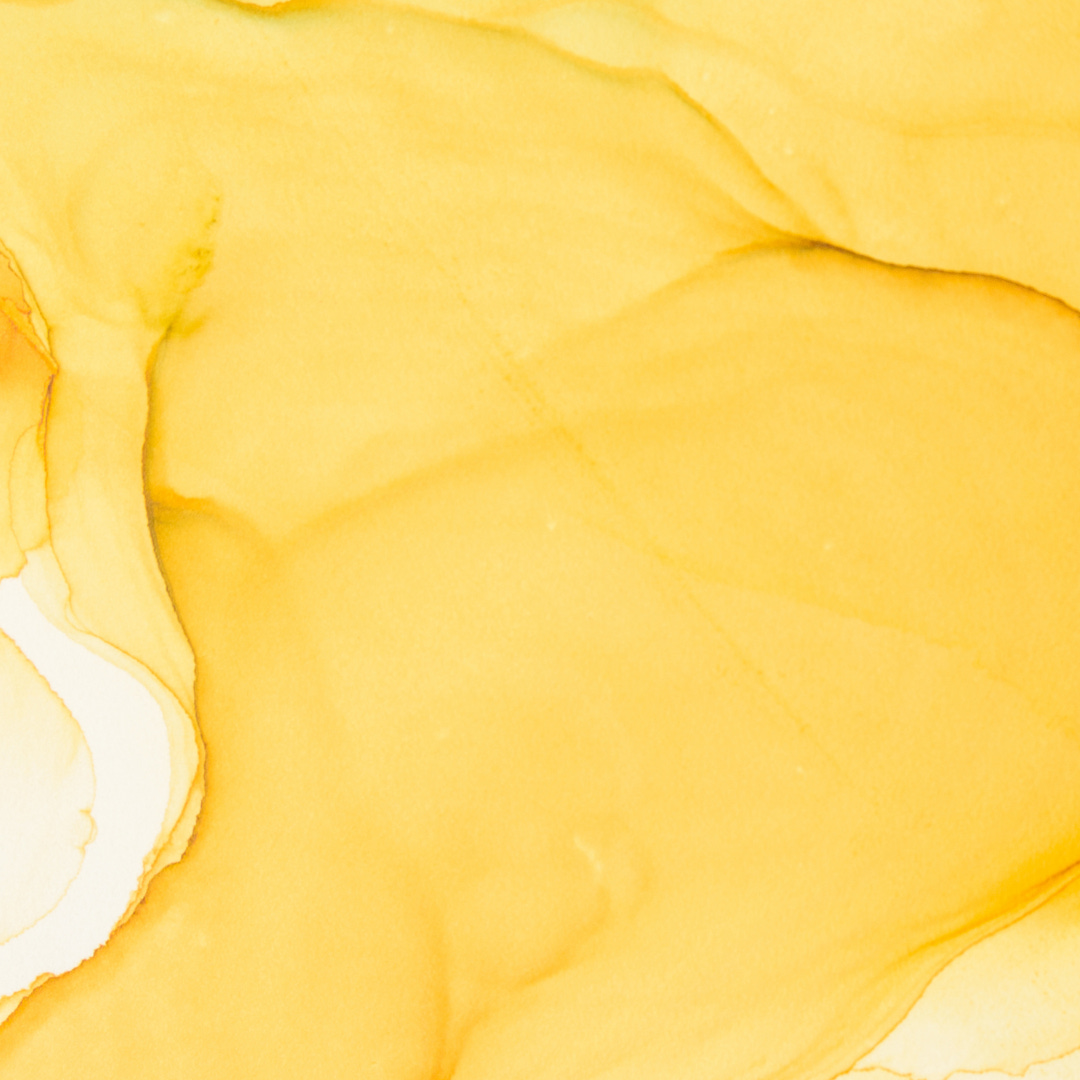

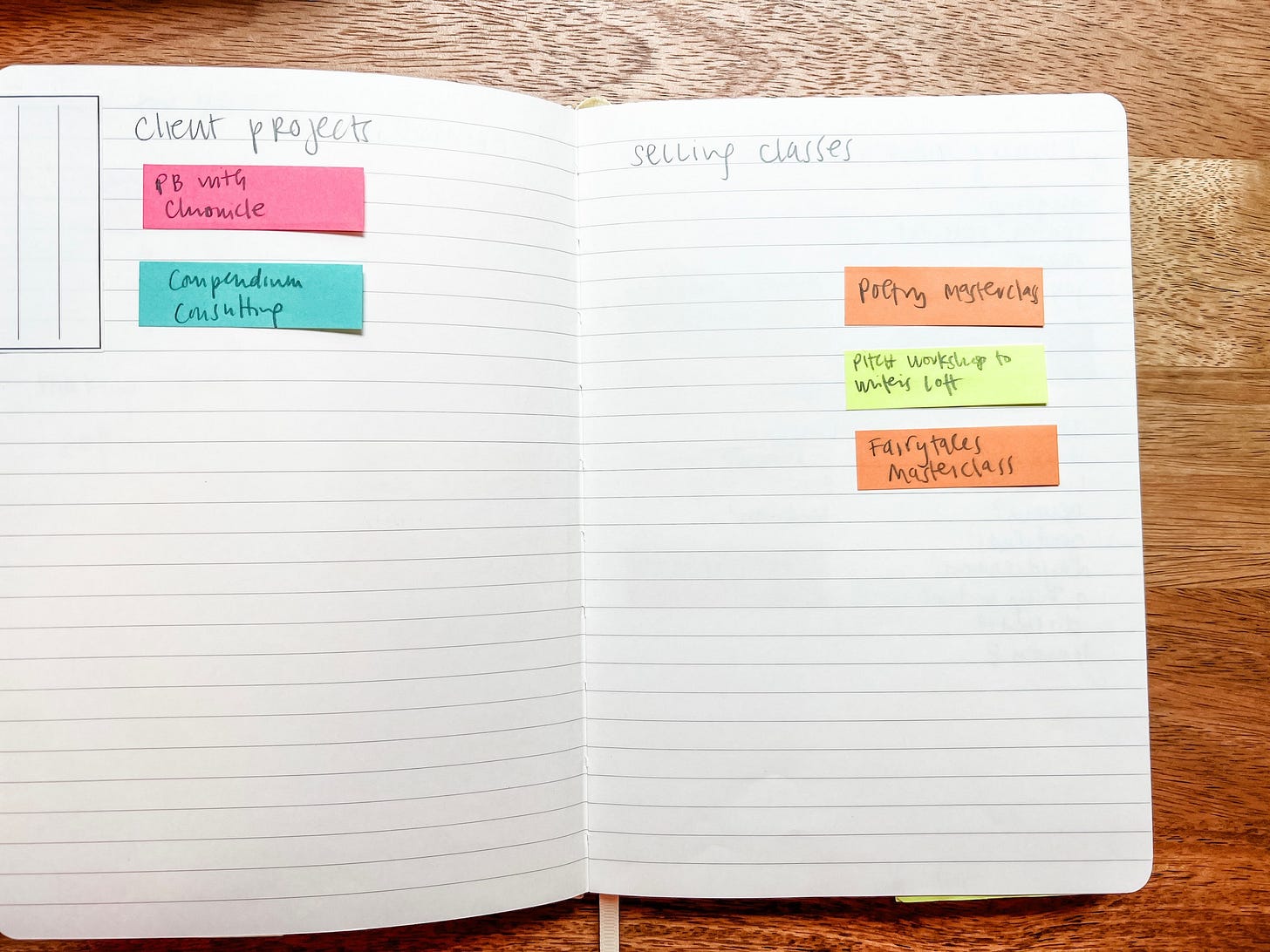
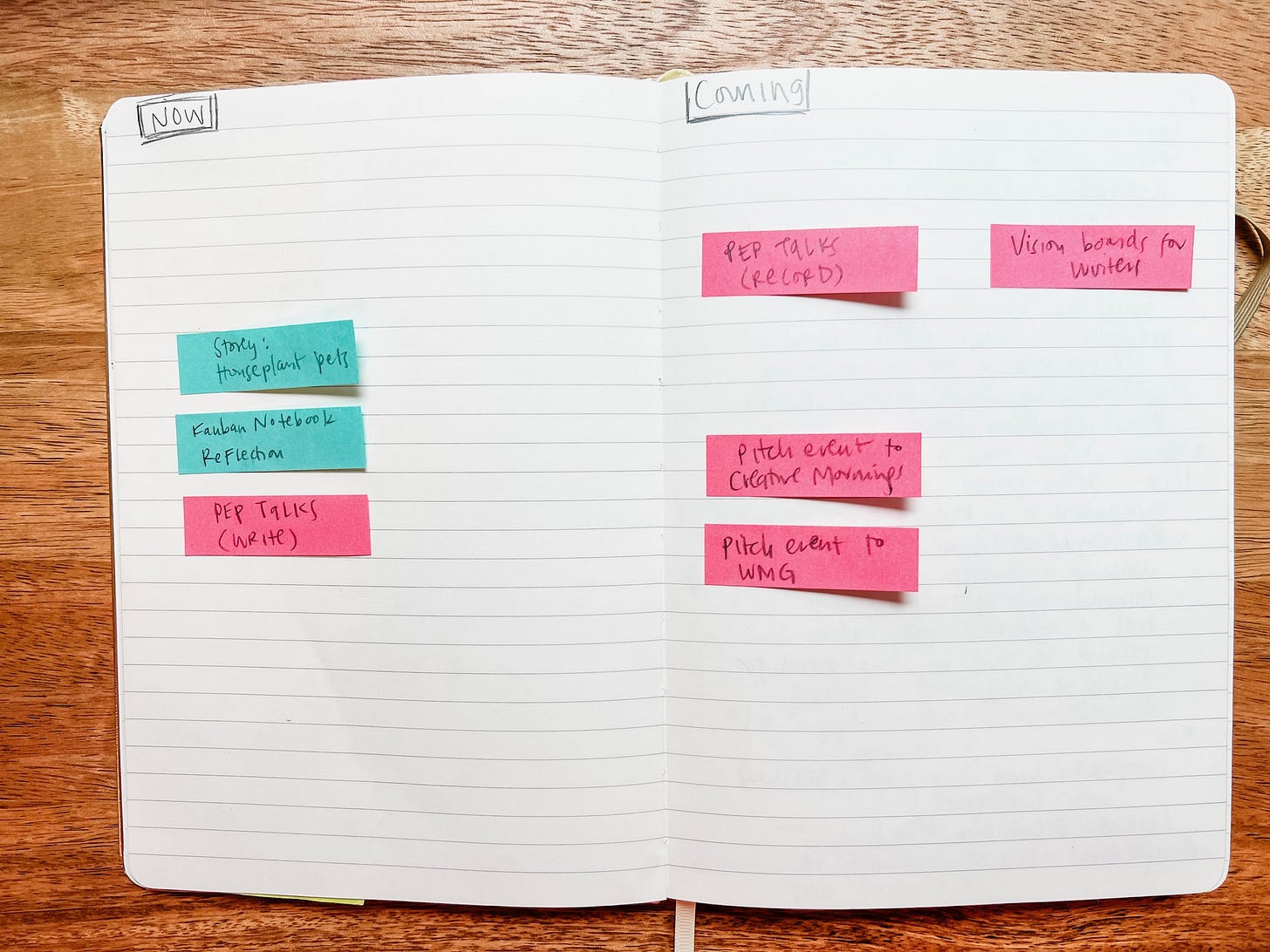
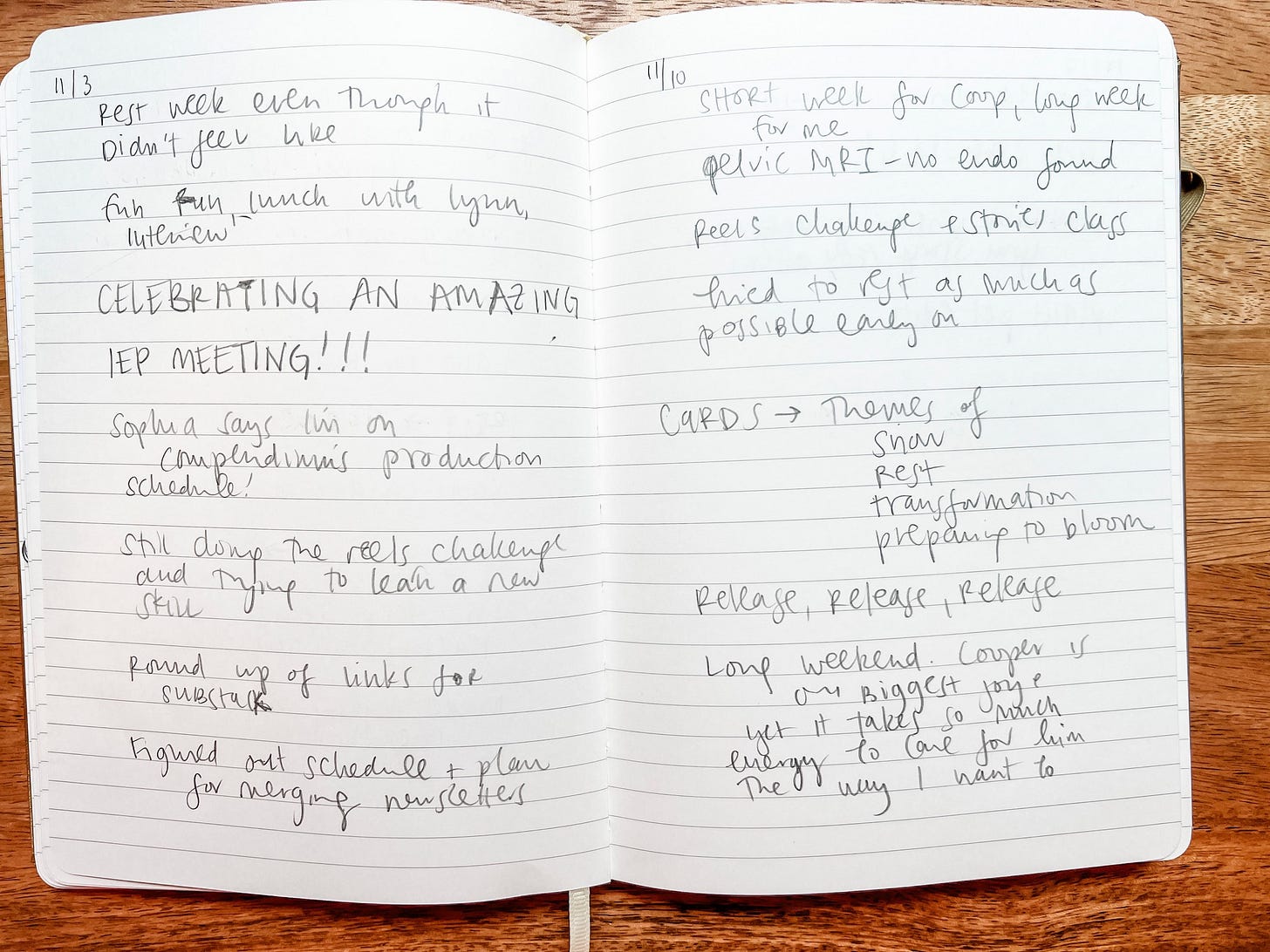
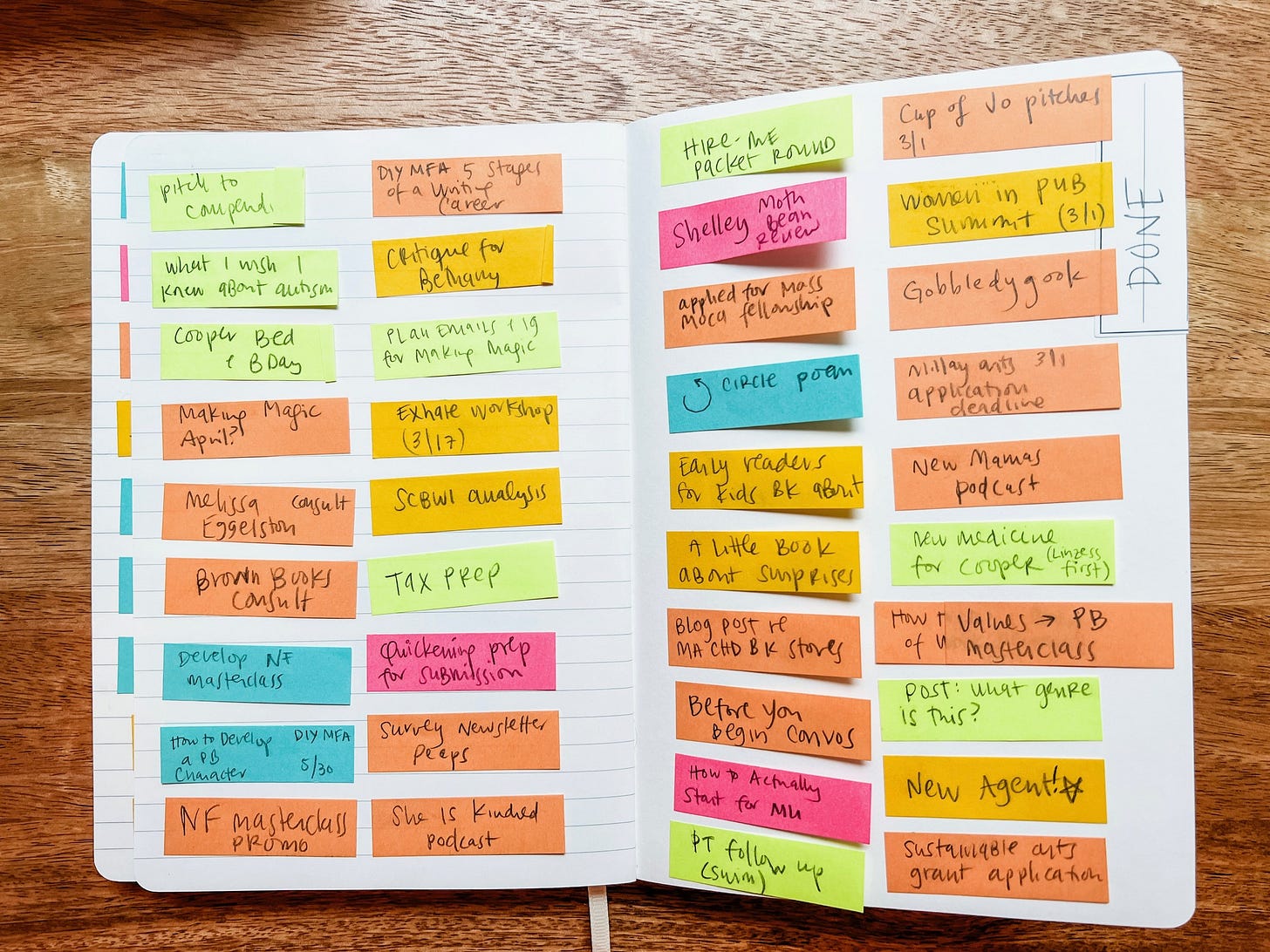
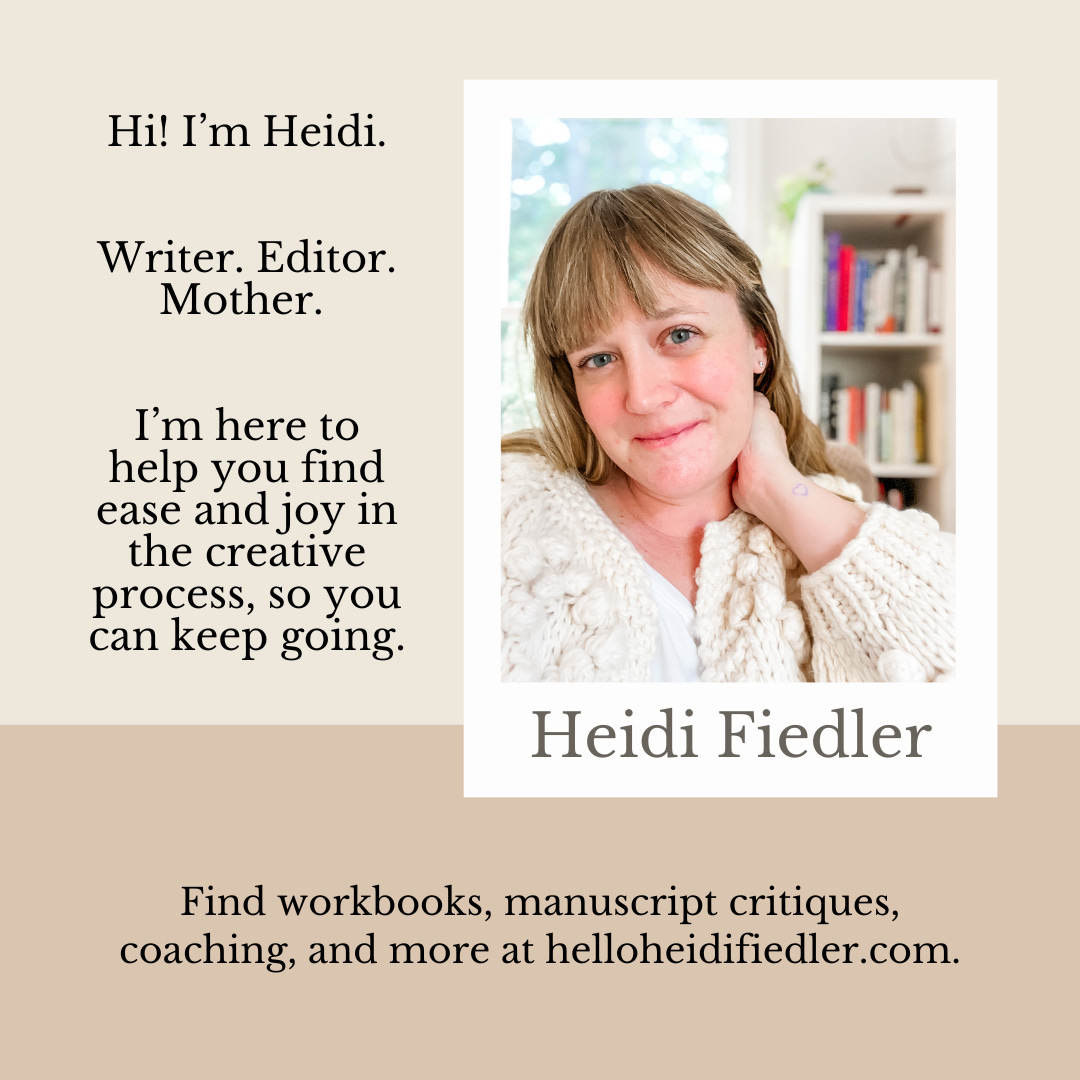

Heidi, this is amazing! I’m so glad you included both photos and video because it helped me better understand how it works. (For example, I wasn’t sure how you divided the sections and could easily find them within the notebook until in the video, where you showed the page stickers that reinforce the divider pages.
I’m loving the accumulation that happens in the Done section! That would be so helpful not just for encouragement of all that has gotten done, but also in reflecting at the end of a year and seeing it all in one place.
I’m also really liking the weekly log idea that you’ve included. It makes room for all the things that don’t show up on the sticky notes, rounding out the fullness that is a life.
Thanks so much for sharing this! It’s putting me in a place of real consideration, the hardest part of which is determining the trade-off of letting go of my current planning system. Hmmmmm. 🤔
I love my paper planner!! It would probably be helpful if my husband and I shared a digital calendar, but I just cannot get on board with digital. 😜